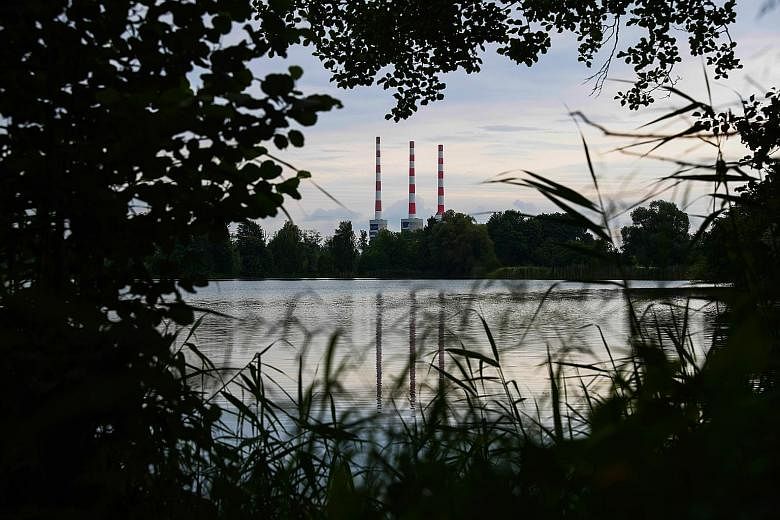BRUSSELS • European Union policymakers yesterday unveiled their most ambitious plan yet to tackle climate change, aiming to turn green goals into concrete action this decade and set an example for the world's other big economies to follow.
The European Commission, the EU executive body, set out in detail how the bloc's 27 countries can meet their collective goal to reduce net greenhouse gas emissions by 55 per cent from 1990 levels by 2030 - a step towards "net zero" emissions by 2050.
This will mean raising the cost of emitting carbon for heating, transport and manufacturing; taxing high-carbon aviation fuel and shipping fuel that have not been taxed before; and charging importers at the border for the carbon emitted in making products such as cement, steel and aluminium abroad. It will consign the internal combustion engine to history.
"Yes, it is hard," EU climate policy chief Frans Timmermans told a news conference. "But it's also an obligation because if we renounce our obligation to help humanity, live within planetary boundaries, we would fail, not just ourselves, but we would fail our children and our grandchildren."
The price of failure, he said, was that they would be "fighting wars over water and food".
The "Fit for 55" measures will require approval by member states and the European Parliament, a process that could take two years.
They will also face intense lobbying from some industries, from poorer member states that want to ward off price rises, and from more polluting countries facing a costly transition.
A diplomat from one EU country said the success of the package would rest on its ability to be realistic and socially fair, while not destabilising the economy.
"The aim is to put the economy on a new level, not to stop it," the diplomat said.
The EU produces only 8 per cent of global emissions, but hopes its example will elicit ambitious action from other major economies when they meet in November in Glasgow for the next milestone United Nations climate conference.
"Europe was the first continent to declare to be climate neutral in 2050, and now we are the very first ones to put a concrete road map on the table," said European Commission president Ursula von der Leyen.
The package arrives days after California suffered one of the highest temperatures recorded on Earth, the latest in a series of brutal heatwaves that have hit Russia, Northern Europe and Canada.
As climate change makes itself felt from the typhoon-swept tropics to the blow-torched bush lands of Australia, Brussels proposed a dozen policies to target most big sources of the fossil fuel emissions that trigger it, including power plants, factories, cars, planes and heating systems in buildings.
The EU has so far cut emissions by 24 per cent from 1990 levels, but many of the most obvious steps, such as reducing reliance on coal to generate power, have been taken already. The next decade will require bigger adjustments, with a long-term eye on 2050, by which date scientists say the world must have reached net zero carbon emissions to prevent climate change becoming catastrophic.
The measures follow a core principle: to make polluting more expensive and green options more attractive to the EU's 25 million businesses and nearly half a billion people.
Under the proposals, tighter emissions limits for cars will make it harder to sell petrol and diesel cars in the EU - and impossible by 2035.
An overhaul of the EU Emissions Trading System, the biggest carbon market in the world, will force factories, power plants and airlines to pay more when they emit carbon dioxide (CO2). Ships will also be added to the system, requiring shipowners to pay for their pollution for the first time.
A new EU carbon market will impose CO2 costs on the transport and construction sectors and on heating buildings.
The commission also wants to impose the world's first carbon border tariff, to ensure that manufacturers do not have a competitive advantage over firms in the EU that are required to pay for the CO2 they produce in making carbon-intensive goods such as cement or fertiliser.
EU member states will also be required to build up forests and grasslands - the reservoirs that keep carbon dioxide out of the atmosphere.
For some EU countries, the package is a chance to confirm the EU's global leadership in fighting climate change and to be at the forefront of those developing the technologies needed.
But the plans have exposed familiar rifts. Poorer member states are wary of policies that will raise costs for the consumer, while regions that depend on coal-fired power plants and mines want guarantees of more support for a transformation that will cause dislocation and require mass re-training.
REUTERS

